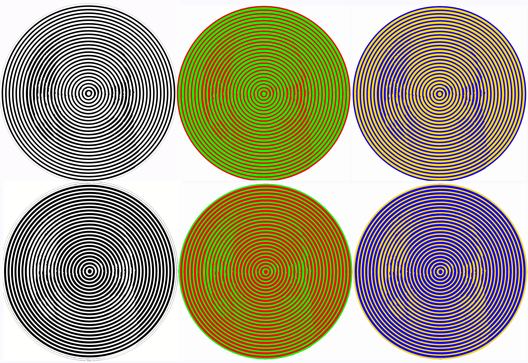Karl Ewald Konstantin Hering1834–1918
Hering represented the phenomenological and nativist tradition in studying vision, which was contrasted to Helmholtz’s empiricist approach, and the two men were often locked in conflict. His work concerned space perception, eye movements, colour vision and contrast phenomena. Hering based his opponent-process theory on colour appearances rather than on mixing lights of different wavelengths. Like Maxwell, he believed that much could be learned from colour names but in contrast, Hering considered that they would be useful in understanding colour perception. He adopted the procedure of presenting coloured papers to observers and asking them to name the colours from which they were mixed. Red, green, blue, and yellow were not said to be mixtures of any other colours. He also examined simultaneous and successive colour contrast phenomena. Together these led him to propose a theory of colour vision based on three oppositional pairs: red-green, blue-yellow, and white-black, and he is shown six times in these oppositional pairs. He speculated that there are three retinal pigments that are either built up or broken down by light to yield the six elements. Modern colour theory has shown both Helmholtz and Hering to be correct in principle but wrong in detail: the initial stage involves three cone pigments (not three kinds of fibres as Helmholtz argued) the signals from which combine neurally (not in the action of the pigments as maintained by Hering) to produce opposing pairs of red-green, blue-yellow and black-white. In the area of space perception Hering utilized the concept of local sign, proposed by Rudolf Hermann Lotze (1817-1881); each retinal point was considered to have a local sign for height, width, and depth. This conflicted with Helmholtz’s emphasis on learning to interpret the retinal signals, largely via information from eye movements. Hering did investigate binocular eye movements and argued that the two eyes move as a single unit: his law of equal innervation states that when one eye moves the other moves with equal amplitude and velocity, either in the same or the opposite direction. Eye movements were also implicated in visual direction: “For any given two corresponding lines of direction, or visual lines, there is in visual space a single visual direction line upon which appears everything which actually lies in the pair of visual lines”. The centre of visual direction was called the cyclopean eye. Hering was born in Altgersdorf, a small village in Saxony. He graduated in medicine from the University of Leipzig in 1858, but pursued an academic rather than a medical career. He succeeded Purkinje as professor of physiology at the University of Prague, returning to Leipzig in 1895.
